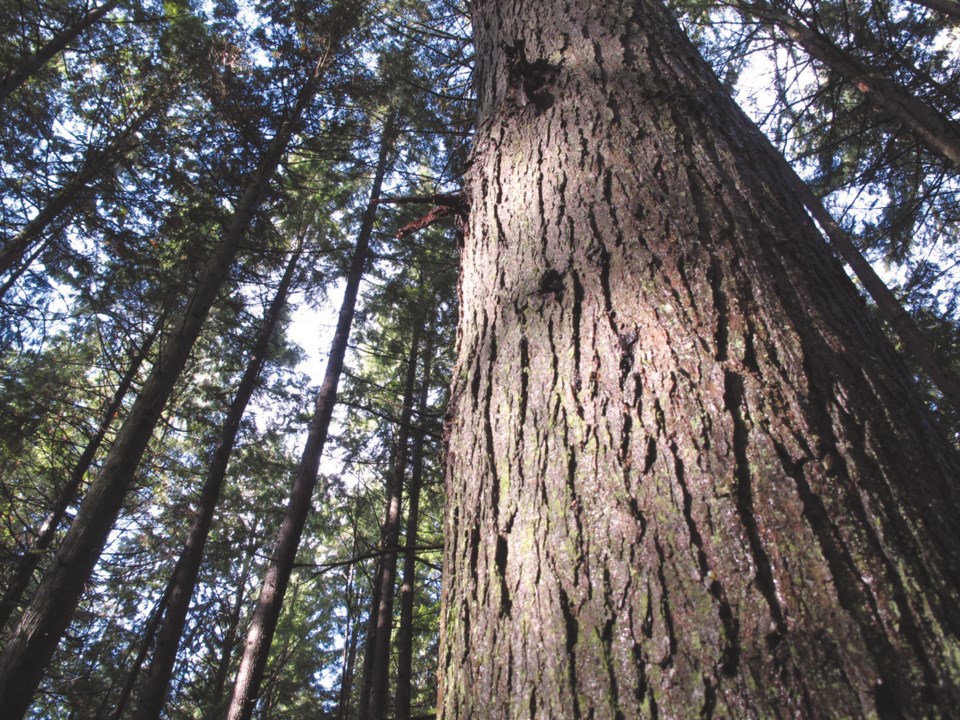What do bankers and trees have in common?
No, it's not that money is printed on paper or at least it used to be. It seems that there's a breed of banker out there who cares about the environment. Who knew? You have probably seen banks that run community events, offer runs for this or that or support some local initiative. But there are few banks that do what TD Bank does for the environment. I know what you're thinking. Todd, you are being paid to say this stuff. Sorry, no, I am not. Thanks to my caring editor who sends me news tidbits that may be of interest I found out about a tree planting event held recently in Greenwood Park sponsored by the TD Friends of the Environment Foundation. At first I was suspicious. Some bank is planting a few trees to put a green wash on their image. But that's not the case in this instance. Founded by TD Bank Group in 1990, The TD FEF is a national charity that funds environmental projects across Canada. And they don't just fund one or two events a year to make themselves look good to their customers. I am sure there must be some ulterior motive but I have to judge them based on their accomplishments, which are many. According to the foundation's website, tdfef.com, since 1990 the TD FEF has provided more than $60 million in funding to more than 21,000 environmental projects across Canada. In 2012, TD FEF provided more than $4.8 million in support of more than 1,000 projects. Thousands of donors give to TD FEF on a monthly basis and TD Bank Group contributes in excess of $1 million annually. TD also covers the management costs of running TD FEF, which guarantees 100 per cent of every dollar donated goes directly to funding environmental projects and programs. Those are pretty significant numbers for an organization whose primary business has little to do with environmental protection or even trees.
So who cares if a few trees were planted in some park that is already covered with trees? Everyone should care because each tree planted helps clean the air of pollution and control stormwater runoff. And each new tree adds beauty to our world.
So what, who cares, I live in the city and trees and forests are so foreign to my environment that it makes little difference to me. Well, that's really part of the problem. The city dweller's disconnect with the natural world has become so acute that there are city-dwelling children who think food originates at the grocery store because they have never seen a farm.
There is abundant research out there that demonstrates how cities with greener environments and more trees have healthier and less crimeprone populations. If it's money that motivates you and all the warm fuzzy stuff means little, consider this statistic from Living Tree Educational Foundation. For a planting cost of $250-$600 (including the first three years of maintenance), a single street tree will return over $90,000 worth of direct benefits (not including aesthetic, cultural, and natural benefits) over the lifetime of the tree. For the homeowner, a household receives roughly $96,000 worth of air pollution control from a single garden tree over an average 50-year lifetime. Another benefit provided by trees is summer shading and cooling of hot pavement and homes. Forested areas are perceived to be more affluent; property values are higher and consumers are willing to spend up to 12 per cent more in treelined districts, and I could go on and on.
It's obvious that the movement to protect the environment and green our cities has fallen to individuals and the private or non-profit sector because provincial and federal governments are either not listening, don't care or they are incapable of doing the job. To reinforce the point, a TD Friends of the Environment Foundation survey, conducted by Ipsos Reid, revealed that 68 per cent of Canadians are concerned about the loss of green space in their community. The survey also revealed that 73 per cent agree that they can personally do more to contribute to a greener community, while 85 per cent believe that the community should take on more responsibility to green their communities.
If you think you cannot make a difference, consider these facts: the TD FEF has 140,000 donors, supporting 21,000 environmental projects with $60 million being distributed to date. Those are all individuals who have crowd-sourced a difference. And here's one more thought from well-known and passionate activist Julia Butterfly Hill, "The question is not: 'Can you make a difference?' You already do make a difference. It's just a matter of what kind of a difference you want to make, during your life on this planet."
Todd Major is a journeyman horticulturist, garden designer and builder, teacher, skills trainer and organic advocate. For advice contact him at [email protected].



